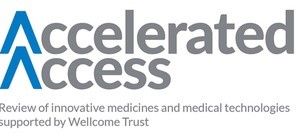
Last week, the government finally published the eagerly-awaited findings of the independent Accelerated Access Review (AAR), written by the AHSN Network (Academic Health Science Network) following the success of the NHS Innovation Accelerator programme.
At Onyx Health, we understand the challenges SMEs have in getting a product adopted in the NHS, as we specialise in helping them do just that through various sales and marketing communications activities. We have taken a look at the recommendations of the AAR and what it could mean for the many companies struggling to get a foot in the big NHS door.
The review aims to make the UK a world-leader in healthcare innovation, ensuring patients benefit from innovative new diagnostic tools, drugs, digital healthcare and medical technologies much more quickly. Making 18 recommendations as to how the UK healthcare system can address barriers to adopting innovations, including how it can work with industry.
The headline news being the creation of a new Accelerated Access Partnership, spanning across NHS England, NHS Improvement, NICE and the MHRA to reduce the time by up to 4 years of getting new treatments from preclinical development to patients.
There are calls for the NHS to better “clarify its needs to innovators” and allow patients to play more of a role in helping to shape areas of prioritisation. It recommends a new Strategic Commercial Unit be established within NHS England to improve commercial dialogue with innovators working on new products, the idea being to create flexible arrangements and secure faster access to the NHS market, and better value for the taxpayer at the same time.
It also suggests a simpler process for digital technologies, which are often developed by smaller companies, such as healthcare apps for managing chronic conditions. It says, “new technologies are coming down the pipeline at a rate we have never seen before” and that, to help support their development and adoption, a new “digital health technology catalyst” should be established to help fund innovators in this area.
The review says NICE needs to “rebalance its works towards products which, accompanied by appropriate changes in the clinical pathways, can improve system efficiency whilst delivering equivalent or better patient outcomes.”
Stronger incentives for local NHS organisations to use and spread the benefits of innovation are also considered. Those suggested include budgetary incentives, such as centralised procurement (e.g. pooled budgets, or outcome-based payments) and financial incentives such as the creation of best practice tariffs or inclusion of medical technologies and digital products in the Innovation and Technology Tariff.
Simon Stevens, chief executive of NHS England, said: “We’ll support the AAR’s streamlined pathway to identify high value innovations. We’ll then help pull them through into mainstream care – building on our AHSNs, innovation testbeds, and our innovation and technology tariff. And where it makes sense, we’ll increasingly be open to agreeing innovative win/win product-specific reimbursement models, incorporating a mix of outcomes-based, annuity-based and volume-based pricing deals.”
Recommendations also cover: improved horizon scanning for innovative new products, and a systematic approach to prioritising the best innovations coming down the pipeline; better data on the impact of technologies on patient outcomes and uptake; and local support for the spread of innovation, through AHSNs.
Patients are central to the review. But this also bodes well for businesses. If implemented, it will help create favourable conditions for the health and life sciences sector – companies, big and small – to thrive, particularly in the North East where so much of this innovation has the potential to come from.
It will also provide growth in research and development, manufacturing, employment and so much more in a post-Brexit UK. However, turning these recommendations into reality will depend on how the government responds to proposals within the review, and whether we see a clear implementation plan follow.
We’ll continue to monitor the full government response, and which of the proposals within the review get adopted (or ditched) and importantly, how it will all work.
If you want us to keep you updated why not follow us on Twitter @OnyxHealth or our Onyx Health LinkedIn Page